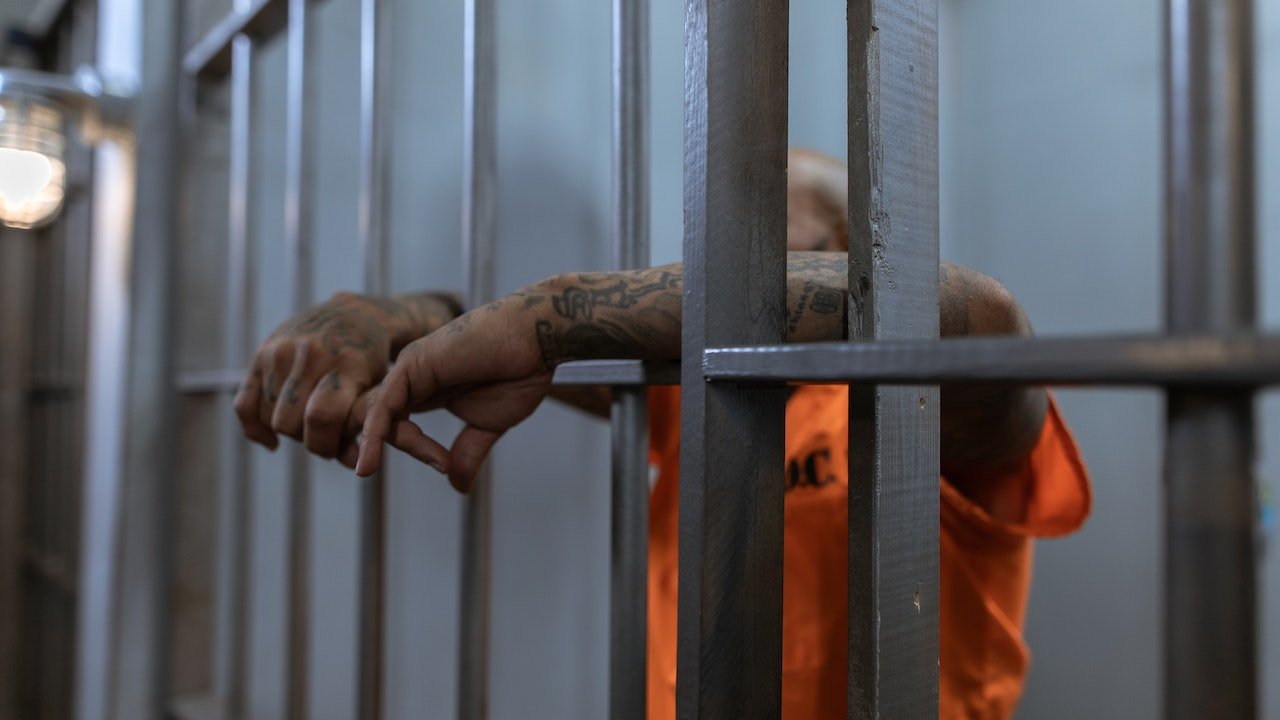Addressing Racial Discrimination in the Criminal Justice System in 2024
Addressing racial discrimination in the criminal justice system in 2024 requires urgent reforms to ensure fairness and equality for all.

In 2024, addressing racial inequality in the criminal justice system will still be an important job that requires our focus and cooperation. Racial prejudice is systemic and widespread, affecting all facets of the justice system, including court cases, law enforcement procedures, and incarceration rates. Racial disparities continue to be a major problem in the United States, affecting the lives of countless people and communities despite a number of reforms and policy changes throughout the years.
In 2024, it will be more crucial than ever to address these problems head-on and strive towards a more just legal system. This entails not just recognising the historical background and contemporary situation of racial discrimination, but also comprehending its underlying causes and long-term effects. Through an analysis of case studies, legislative endeavours, community-based initiatives, and technology developments, we can discern efficacious approaches to counteract racial prejudice and foster equity for all.
Contents
- 1 Addressing Racial Discrimination in the Criminal Justice System in 2024
- 1.1 Historical Context
- 1.2 Current State of Racial Discrimination
- 1.3 Causes of Racial Discrimination
- 1.4 Impact of Racial Discrimination
- 1.5 Case Studies
- 1.6 Legislative and Policy Efforts
- 1.7 Role of Law Enforcement
- 1.8 Judicial System
- 1.9 Prison System
- 1.10 Community and Grassroots Efforts
- 1.11 Technological and Data-Driven Solutions
- 1.12 International Perspectives
- 1.13 Future Outlook
- 2 Conclusion
- 3 FAQs
Addressing Racial Discrimination in the Criminal Justice System in 2024
Historical Context
Understanding the historical context of racial discrimination in the criminal justice system is essential to grasp its current state. For decades, racial minorities, particularly African Americans, have faced systemic biases that have led to disproportionate arrests, convictions, and harsher sentences. From the Jim Crow era to the Civil Rights Movement, significant strides have been made, but the remnants of past injustices still linger.
Current State of Racial Discrimination
Despite progress, racial discrimination in the criminal justice system persists. Recent statistics reveal alarming disparities. For instance, African Americans are incarcerated at over five times the rate of white Americans. Similarly, minority communities often face harsher treatment from law enforcement and longer sentences compared to their white counterparts. These disparities underscore the need for continued efforts to address racial discrimination.
Causes of Racial Discrimination
Racial discrimination in the criminal justice system is multifaceted. Systemic racism, deeply entrenched in societal structures, plays a significant role. Socioeconomic factors also contribute, as marginalized communities often lack access to quality education, healthcare, and employment opportunities, leading to higher crime rates. Additionally, implicit biases among law enforcement and judicial personnel can influence decision-making processes, perpetuating discrimination.
Impact of Racial Discrimination
The impact of racial discrimination in the criminal justice system is profound. It not only affects individuals but also has ripple effects on families and communities. Those who are wrongfully incarcerated or receive harsher sentences face long-term consequences, including limited employment opportunities and social stigmatization. Communities with high incarceration rates experience destabilization, increased poverty, and diminished trust in the justice system.
Case Studies
Examining specific cases can shed light on the real-world implications of racial discrimination. The cases of George Floyd and Breonna Taylor, for example, brought national attention to issues of police brutality and racial profiling. These cases highlighted the urgent need for reform and accountability within law enforcement and the broader criminal justice system.
Legislative and Policy Efforts
In recent years, several legislative and policy efforts have been implemented to address racial discrimination in the criminal justice system. The First Step Act, passed in 2018, aimed to reduce mandatory minimum sentences and improve prison conditions. While this was a significant step forward, more comprehensive reforms are needed to tackle the root causes of discrimination and ensure lasting change.
Role of Law Enforcement
Law enforcement practices, particularly racial profiling and excessive use of force, are critical areas for reform. Training programs focusing on implicit bias and de-escalation techniques have been introduced in many police departments. However, the effectiveness of these initiatives varies, and continuous evaluation and improvement are necessary to ensure meaningful change.
Judicial System
The judicial system also plays a pivotal role in perpetuating racial discrimination. Sentencing disparities, where minority individuals receive harsher penalties for similar crimes, are a glaring issue. Additionally, the lack of diversity among judges and attorneys can influence courtroom dynamics and outcomes. Efforts to increase representation and address biases within the judicial system are ongoing but require sustained commitment.
Prison System
Racial disparities in incarceration rates are stark. Minority group , particularly African Americans and Hispanics, are disproportionately represented in prisons. The conditions and treatment of minority inmates often exacerbate the challenges they face. Addressing these disparities requires a comprehensive approach, including prison reform, support for rehabilitation, and programs aimed at reducing recidivism.
Community and Grassroots Efforts
Community and grassroots organizations play a vital role in addressing racial discrimination. Advocacy groups such as Black Lives Matter have brought national attention to issues of racial injustice and mobilized communities to demand change. Local programs focusing on education, economic empowerment, and community policing have also shown promise in reducing discrimination and fostering trust between communities and law enforcement.
Technological and Data-Driven Solutions
Technology and data analytics are increasingly being used to identify and address biases within the criminal justice system. Body-worn cameras, for instance, provide transparency and accountability in police interactions. Data-driven approaches can also help identify patterns of discrimination and inform policy decisions. However, the implementation of these technologies must be accompanied by robust oversight to ensure their effectiveness.
International Perspectives
Comparing the criminal justice systems of other countries can provide valuable insights into addressing racial discrimination. Countries such as Norway and Germany, which focus on rehabilitation rather than punishment, have lower incarceration rates and fewer racial disparities. While not all approaches are directly transferable, these examples highlight the importance of considering alternative models and learning from international best practices.
Future Outlook
Looking ahead, the future of addressing racial discrimination in the criminal justice system remains uncertain but hopeful. Continued advocacy, legislative efforts, and community engagement are crucial to driving progress. Technological advancements and data analytics will play an increasingly important role in identifying and mitigating biases. However, achieving lasting change will require sustained commitment and collaboration across all levels of society.
Read More: Civil Rights in the Workplace: What Employees Should Know in 2024
Conclusion
In 2024, addressing racial prejudice in the criminal justice system will still be a difficult task that requires constant attention and perseverance. Due to the systemic nature of the problem, a multimodal strategy that includes technology-enabled bias identification and mitigation, community participation, and policy reforms is necessary. Through examining historical contexts and global viewpoints, we can enhance our comprehension of the underlying causes of racial disparities and strive towards significant progress.
Looking ahead, the dedication of people, communities, and legislators will be essential in advancing the cause. Raising awareness and promoting changes that guarantee equality and fairness within the legal system requires the active participation of both advocacy and education. A more just and equal society will be possible for everybody, even though the road to eliminating racial prejudice is long and full of challenges.
FAQs
What are the main causes of racial discrimination in the criminal justice system?
The main causes include systemic racism, socioeconomic factors, and implicit biases within law enforcement and the judicial system.
How can individuals contribute to reducing racial discrimination?
Individuals can contribute by advocating for policy reforms, supporting community programs, and participating in awareness campaigns to address biases and promote equality.
What are some recent legislative efforts to address racial discrimination?
Recent efforts include the First Step Act, which aimed to reduce mandatory minimum sentences and improve prison conditions. Ongoing reforms focus on policing practices, judicial diversity, and sentencing guidelines.
How does racial discrimination in the criminal justice system impact society?
Racial discrimination affects individuals and communities by perpetuating inequality, limiting opportunities, and eroding trust in the justice system. It also has long-term societal impacts, including increased poverty and social instability.
What role does technology play in addressing racial discrimination?
Technology, such as body-worn cameras and data analytics, helps identify and address biases within the criminal justice system. These tools provide transparency, accountability, and insights that can inform policy decisions.






One Comment